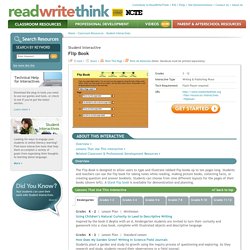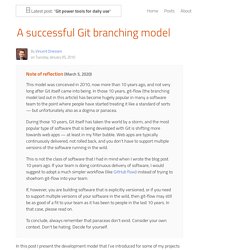

Votorola. AnswerGarden. Wikispaces. Word Mosaic. BuiLD YouR WiLD SeLF. Interactive Learning Sites for Education - Home. Welcome to Flubaroo. Welcome to Erly. Thunderclap. Flip Book. The Flip Book is designed to allow users to type and illustrate tabbed flip books up to ten pages long.

Students and teachers can use the flip book for taking notes while reading, making picture books, collecting facts, or creating question and answer booklets. Students can choose from nine different layouts for the pages of their books (shown left). A blank flip book is available for demonstration and planning. Grades K – 12 | Student Interactive | Writing & Publishing Prose Stapleless Book The Stapleless Book can be used for taking notes while reading, making picture books, collecting facts, or creating vocabulary booklets . . . the possibilities are endless!
Printing Press The interactive Printing Press is designed to assist students in creating newspapers, brochures, and flyers. Grades 3 – 12 | Mobile App | Writing & Publishing Prose RWT Flip Book The Flip Book app is designed to allow users to type and illustrate tabbed flip books. Grades 3 – 8 | Calendar Activity | August 13. Cube Creator.
Summarizing information is an important postreading and prewriting activity that helps students synthesize what they have learned.

The interactive Cube Creator offers four options: Bio Cube: This option allows students to develop an outline of a person whose biography or autobiography they have just read; it can also be used before students write their own autobiography. Specific prompts ask students to describe a person's significance, background, and personality. Mystery Cube: Use this option to help your students sort out the clues in their favorite mysteries or develop outlines for their own stories. Among its multiple applications, the Mystery Cube helps students identify mystery elements, practice using vocabulary from this popular genre, and sort and summarize information.
Story Cube: In this cube option, students can summarize the key elements in a story, including character, setting, conflict, resolution, and theme. A successful Git branching model » nvie.com. Note of reflection (March 5, 2020)This model was conceived in 2010, now more than 10 years ago, and not very long after Git itself came into being.

In those 10 years, git-flow (the branching model laid out in this article) has become hugely popular in many a software team to the point where people have started treating it like a standard of sorts — but unfortunately also as a dogma or panacea.During those 10 years, Git itself has taken the world by a storm, and the most popular type of software that is being developed with Git is shifting more towards web apps — at least in my filter bubble. Web apps are typically continuously delivered, not rolled back, and you don't have to support multiple versions of the software running in the wild.This is not the class of software that I had in mind when I wrote the blog post 10 years ago.
Why git? ¶ For a thorough discussion on the pros and cons of Git compared to centralized source code control systems, see the web. The main branches ¶ develop. Educational Technology and Mobile Learning. Digital Delights for Learners. Get popular free downloadable tools to use in the classroom. Visible Tweets – Twitter Visualisations. Now with added prettiness! Download Stopwatch - Stay On Top Stopwatch. Think.com, Oracle Education Foundation, Projects. Landmarks Class Blogmeister.
Anatomy of a good speaker (Brené Brown as a speaker) Improve Your Presentation Skills. Arguably, teachers present for a living, but take them out of the confines of the classroom, some find it a difficult – even harrowing – experience.

So if you’ve got to lead CPD at your next staff meeting or make a presentation to parents that you’re dreading – here are some useful tips to help set you on the right track. The Key Areas for Presentation Success Are: SpeedToneIntonationProjectionNon-verbal messages Speed Perfecting the pace of your delivery is an art that needs to be much practiced to reach perfection! In the more exciting parts, quicken your pace to help build up the action and create a sense of anticipation. Pausing occasionally to create a dramatic effect can be useful, but take care not to overdo it – at best it can slow the pace too much and at worst it can provide an opportunity for an inappropriate input from the audience!
Listen to your audience and gauge their reaction – quicken your pace a little if you are losing their attention. Tone Intonation Projection. Nail the First 60 Seconds of Your Presentation. Presenter. Talk Timer. Public Speaking. 10 Public Speaking Tips.